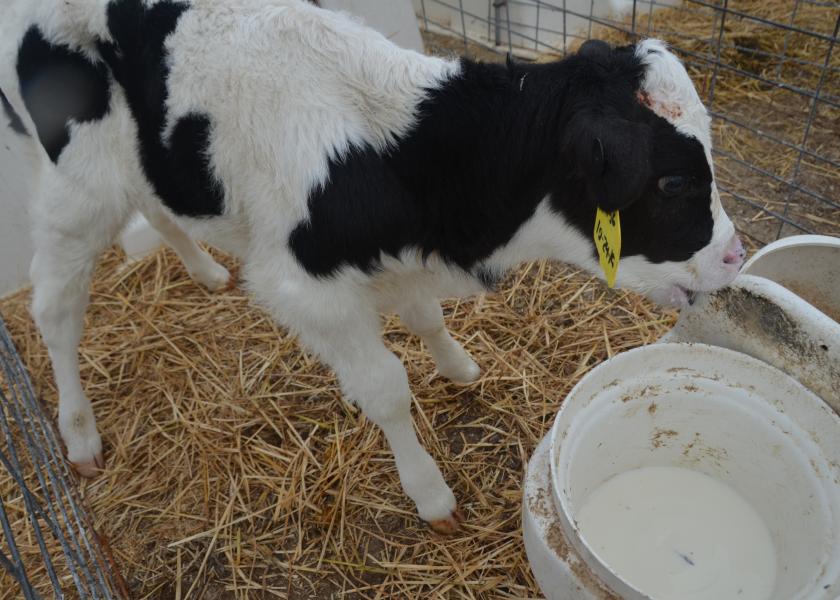Transition Milk Boosts Calves' Digestive Development

Newborn dairy calves don’t grow much in the first week of life, and University of Guelph researcher Michael Steele thinks he might know one reason why.
Steele manages a lab in the Department of Animal Biosciences at the university, where he and a team of researchers are exploring a variety of factors that may impact calf development and performance. In a recent webinar sponsored by the Dairy Cattle Welfare Council, he discussed one such study, which compared digestive development of calves in three feeding scenarios:
- Colostrum on Day 1, followed by an immediate transition to whole milk
- Colostrum on Day 1, followed by 5 feedings of 50% colostrum and 50% whole milk (transition milk)
- Colostrum on Day 1, followed by 100% colostrum for an additional 5 feedings
The team found that the first feeding group had greatly depressed length of intestinal villi, compared to the transition-milk and colostrum groups. There was no significant difference in gut surface area of the second and third group, suggesting that transition milk may be adequate to maximize digestive development.
Steele believes the transition of the calf from colostrum to milk may be equally or even more important than other critical transitions in a dairy animal’s life. “We focus a lot on transition during weaning and of course transition to lactation, but the transition from colostrum to milk in the neonate is another highly critical juncture,” he noted.
He said abruptly switching from colostrum to milk deletes an important nutritional phase in which cows produce nutrient-rich milk that is high in energy and contains important developmental hormones. Figure 1 shows a summary by German researchers that details the composition of milk from the second through fifth milkings.
“In addition to dry matter, fat, protein and amino acids, transition milk is higher than mature milk in bioactive components that promote growth, including lactoferrin, insulin, oligosaccharides, growth hormone and IGF-1,” said Steele. “These are all components that Mother Nature intended to deliver to the calf.”
The researcher noted that the dairy industry’s laser-like focus on achieving passive transfer of immunity is not necessarily a bad thing, but it should not be the only priority in feeding newborn calves. In the same feeding study that compared milk, transition milk and colostrum, all three groups achieved successful transfer of immunity, yet the milk group suffered in digestive development.
“I think a key conclusion is that IgG is not the only game in town when it comes to colostrum and transition milk,” he stated. “In the future, I envision that we may evaluate colostrum on not only its IgG levels, but also according to its contents of oligosaccharides, IGF-1, insulin and other beneficial components – all of which remain important in transition milk as well.”
Steele noted there are still many basic concepts of calf biology and nutrition that are not fully understood. “It’s an exciting time to be a calf researcher,” he said.

Figure 1. Composition of colostrum and transition milk from the first five milkings, compared to mature milk (Conneely et al. 2014).







